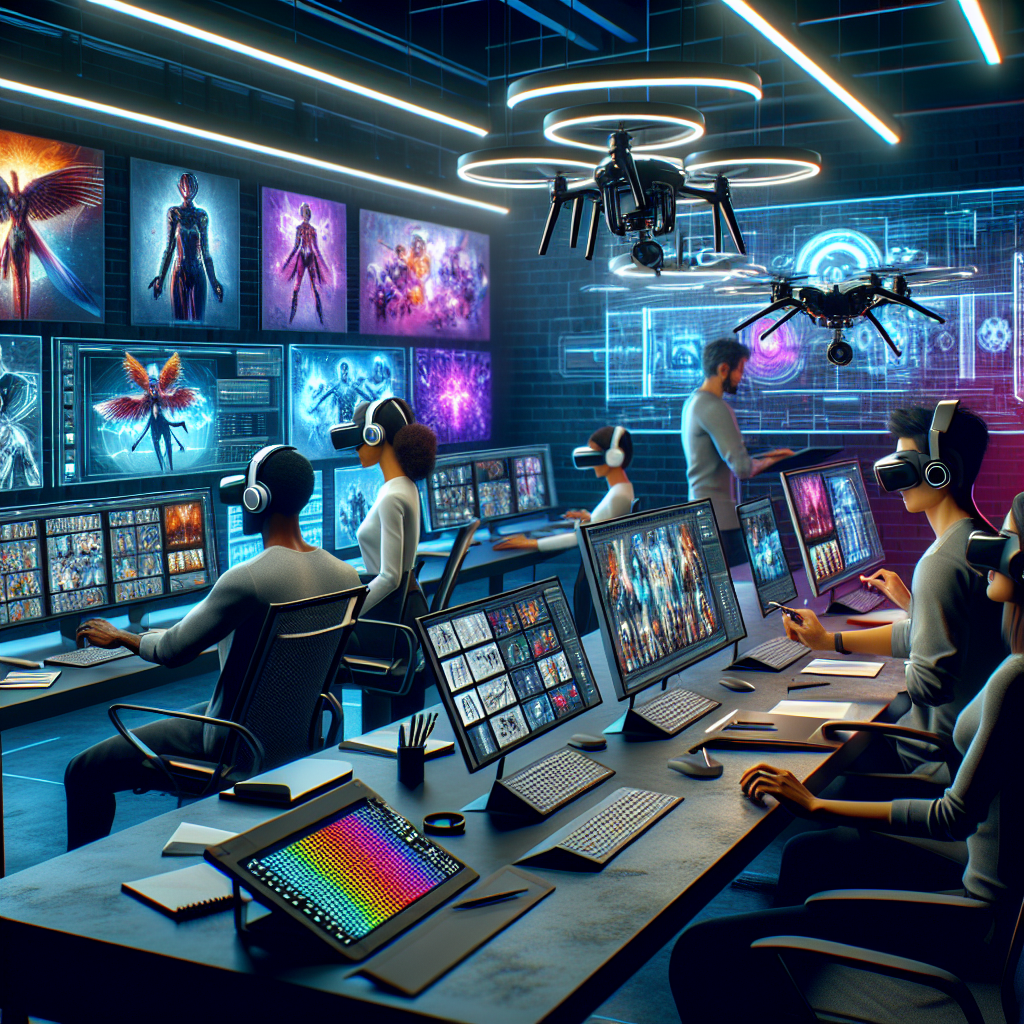Artificial Intelligence (AI) has been making significant impacts across various industries, and animation is no exception. AI technology is transforming the animation industry by streamlining processes, improving efficiency, and enhancing creativity. From character design to motion capture, AI is revolutionizing the way animators work and creating new possibilities for storytelling. In this article, we will explore how AI is being used in animation and its implications for the future of the industry.
AI in Character Design
One area where AI is making a big impact in animation is character design. Traditionally, animators would spend hours sketching and refining character designs, but AI tools can now automate this process. AI algorithms can analyze existing character designs and create new ones based on the style and requirements of the project. This not only saves time but also allows animators to explore new design possibilities that they may not have considered otherwise.
AI in Animation Production
AI is also being used to streamline the animation production process. For example, AI algorithms can be used to automate tasks such as in-betweening, where the computer generates frames between keyframes to create smooth motion. This can significantly reduce the time and effort required to produce high-quality animations. AI can also be used to enhance the rendering process, making it faster and more efficient.
AI in Motion Capture
Motion capture is another area where AI is making a big impact in animation. Traditionally, motion capture involved actors wearing special suits with markers that would track their movements. However, AI technology can now analyze video footage of actors and generate motion capture data without the need for markers. This not only makes the motion capture process more convenient but also allows for more natural and expressive animations.
AI in Storytelling
AI is also being used to enhance storytelling in animation. For example, AI algorithms can analyze scripts and suggest changes to improve pacing, dialogue, and character development. AI can also be used to generate storyboards based on the script, providing visual references for the animators. This can help streamline the pre-production process and ensure that the final animation aligns with the original vision of the project.
FAQs
Q: How is AI being used in 3D animation?
A: AI is being used in 3D animation to automate tasks such as character design, animation production, and motion capture. AI algorithms can analyze existing data and generate new designs, automate in-betweening, and generate motion capture data without the need for markers.
Q: How is AI impacting the creativity of animators?
A: AI is not replacing the creativity of animators but rather enhancing it. By automating time-consuming tasks and providing new design possibilities, AI tools can free up animators to focus on more creative aspects of their work. AI can also suggest changes to scripts and storyboards to improve storytelling.
Q: Will AI replace animators in the future?
A: While AI technology is transforming the animation industry, it is unlikely to replace animators entirely. AI tools are meant to enhance the work of animators, not replace it. Animators bring a unique artistic vision and creativity to their work that AI cannot replicate.
Q: What are some examples of AI tools used in animation?
A: Some examples of AI tools used in animation include Artomatix, which automates the texturing process, DeepMotion, which generates motion capture data, and Scriptbook, which analyzes scripts and suggests changes. These tools help streamline the animation production process and enhance creativity.
In conclusion, AI is transforming the animation industry by streamlining processes, enhancing creativity, and creating new possibilities for storytelling. From character design to motion capture, AI technology is revolutionizing the way animators work and opening up new opportunities for innovation. While AI tools are meant to enhance the work of animators, it is important for animators to continue to bring their unique artistic vision and creativity to their work. As AI technology continues to evolve, the future of animation looks bright with endless possibilities for animators to explore.

